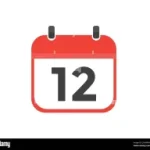Who is the rider of the white horse?
The key to his identity is found in the same Bible book, Revelation, which later identifies this heavenly rider as “The Word of God.” (Revelation 19:11-13) That title, The Word, belongs to Jesus Christ, for he acts as God’s spokesman. (John 1:1, 14) In addition, he is called “King of kings and Lord of lords” and is described as “Faithful and True.” (
Revelation 19:16) Clearly, he has authority to act as a warrior-king, and he does not wield his power in any corrupt or abusive way. Yet, some questions arise.
Who gives Jesus the authority to conquer? (
Revelation 6:2) The prophet Daniel saw a vision in which the Messiah, likened to “a son of man,” was given “rulership, honor, and a kingdom” by none other than “the Ancient of Days,” Jehovah God.
a (
Daniel 7:13, 14) Thus,
it is Almighty God who grants Jesus the power and right to rule and execute judgment. The white horse is an appropriate symbol for warfare justly carried out by God’s Son, for the Scriptures often use the color white to symbolize righteousness.—Revelation 3:4; 7:9, 13, 14.
“Another came out, a fiery-colored horse, and it was granted to the one seated on it to take peace away from the earth so that they should slaughter one another, and he was given a great sword.”—Revelation 6:4.
This rider represents warfare. Notice that he takes peace away from not just a few nations but the whole earth. In 1914,
for the first time in history, a global war erupted. It was followed by a second world war, which was even more destructive. Some estimates place the total number of deaths due to wars and armed conflicts since 1914 at more than 100 million! In addition, vast numbers of other individuals suffered debilitating injuries.
“I saw, and look! a black horse, and the one seated on it had a pair of scales in his hand. I heard what sounded like a voice in the midst of the four living creatures say: ‘A quart of wheat for a denarius and three quarts of barley for a denarius; and do not harm the olive oil and the wine.’”—Revelation 6:5, 6.
This rider represents famine. We find here a picture of food rationing so severe that a quart (1.08 L) of wheat would cost one denarius, a whole day’s wage in the first century! (
Matthew 20:2) The same coin could purchase three quarts (3.24 L) of barley, a grain viewed as inferior to wheat. How far would that go to feed a large family? People are then warned to be frugal even with daily foodstuffs, aptly pictured by such basic staples of that time and culture as olive oil and wine.
“I saw, and look! a pale horse, and the one seated on it had the name Death. And the Grave was closely following him. And authority was given them over the fourth part of the earth, to kill with a long sword and with food shortage and with deadly plague and by the wild beasts of the earth.”—Revelation 6:8.
The fourth rider represents death due to plague and other causes. Soon after 1914, the Spanish flu killed tens of millions. Possibly some 500 million people were infected, about 1 out of every 3 humans then alive!
But the Spanish flu was just the beginning. Experts estimate that hundreds of millions died of smallpox during the 20th century. To this day, the lives of millions are cut short by AIDS, tuberculosis, and malaria, despite intensive medical research.
The result is the same, death—whether due to war, famine, or plague. The Grave relentlessly gathers up the victims, offering no hope.
https://wol.jw.org/en/wol/d/r1/lp-e/2017086





